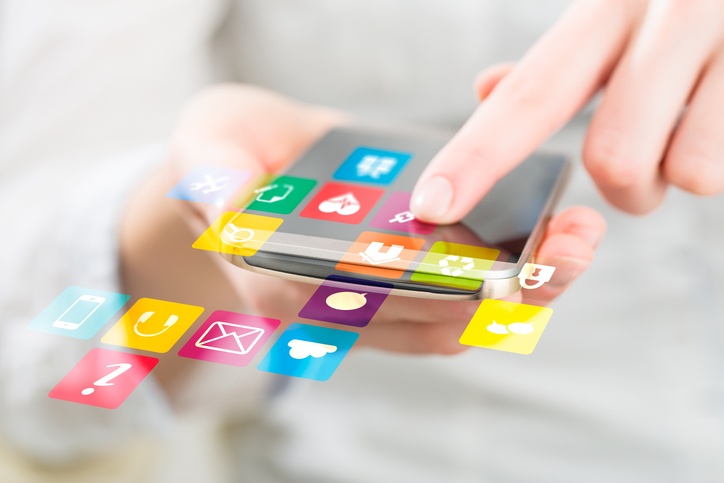 Today’s customer is a cross-channel shopper-they use different combinations of social media, instant messenger, email, mobile apps, tablets, smartphones, desktop computers, in-store browsing and now wearable technology to make a purchasing decision.
Today’s customer is a cross-channel shopper-they use different combinations of social media, instant messenger, email, mobile apps, tablets, smartphones, desktop computers, in-store browsing and now wearable technology to make a purchasing decision.
If brands want to capitalize on every opportunity to help customers make the right decision, they must use cross-channel strategies.
But cross-channel strategies aren’t just about existing where customers spend the most time. Brands must create a simple, seamless experience online, on mobile devices and in store. The most successful strategies bridge the gap between the offline and online experience.
Take a look at these four brands with remarkably successful cross-channel strategies.
1. Nordstrom
Using digital channels to drive in-store purchases.
Back when e-commerce was still a developing trend, Nordstrom went all in and set out to make their merchandise just as accessible online as it was in-store. But this noble gesture resulted in their in-store revenue taking a dive.
To rectify the situation, they learned how to use digital channels to drive more traffic to their brick-and-mortar locations. If a customer searches for a product online, or browses products in apps like Instagram, Nordstrom offers a “Check Availability” feature and automatically displays search results based on the inventory of their nearest store.
Nordstrom also uses mobile ads to promote in-store events and retargeting to reconnect with customers who showed interest in their merchandise but did not complete their transaction.
2. Vivint Smart Home
Leveraging online and offline insights to create personalized customer support.
Vivint Smart Home, the largest provider of smart home systems, uses online insights to customize phone conversations between their reps and potential customers. For example, if a customer shows interest in a specific product online, that information is automatically available to reps the moment that customer calls.
Vivint also uses email to follow up on phone discussions and includes specific information gleaned from the call. This allows them to guide their customer’s next step in a highly personalized way.
They also implement retargeting online to reconnect with customers who called but did not reach a purchasing decision.
3. Disney
Creating the most imaginative cross-channel experience.
Disney‘s website is highly responsive and allows you to quickly and easily book trips, even on a tablet or mobile device. Disney also offers a My Disney Experience tool that helps you plan every detail of your trip.
Once inside the park, your Disney mobile app is your park map that offers real-time information, including estimated wait times. And their Magic Band program provides customers with smart wristbands and cards that double as their hotel key, PhotoPass connection (for sharing in-park pictures online), food-ordering tool and FastPass+ for rides and attractions.
In short, they imaginatively amplified their in-park experience with online, mobile and wearable technologies.
4. Starbucks
Offering a cross-channel rewards program.
Starbucks offers a free customer rewards card that can be used to purchase goods and, with each purchase, accumulate “stars” to earn rewards.
But what makes their rewards program stand out is that customers can check and reload their cards online, via mobile device, within the Starbucks app or in-store. The moment an adjustment is made to a customer account, those changes are instantaneously applied, which means in-store experience doesn’t skip a beat.
Starbucks also uses their app to send in-app messages about special in-store promotions.
Putting the Pieces Together: What Does Success Look Like?
A successful cross-channel strategy must incorporate the use of email, retargeting ads and personalization to create such consistent and relevant messaging, customers feel like your brand truly understands who they are and what they want or need.
The most successful strategies create a cohesive experience online, via mobile device, or in-store, and provide customers with a clear and simple path from product discovery to purchase. As a result, customers feel like they are receiving VIP treatment, which leads to conversion, future purchases, brand loyalty and brand advocacy.
If cross-channel success is on your priority list, start by stepping up your email strategy with these 4 Types of Email Campaigns You’ll Need in 2017.
 Affiliate Marketing
Affiliate Marketing Automotive
Automotive eCommerce and Retail
eCommerce and Retail FinTech
FinTech LeadGen
LeadGen Nonprofit and Political
Nonprofit and Political Payments
Payments Technology Platforms
Technology Platforms Tourism and Hospitality
Tourism and Hospitality
 Today’s customer is a cross-channel shopper-they use different combinations of social media, instant messenger, email, mobile apps, tablets, smartphones, desktop computers, in-store browsing and now wearable technology to make a purchasing decision.
Today’s customer is a cross-channel shopper-they use different combinations of social media, instant messenger, email, mobile apps, tablets, smartphones, desktop computers, in-store browsing and now wearable technology to make a purchasing decision.